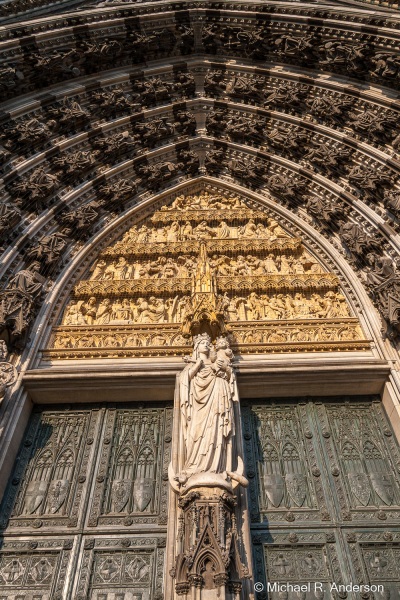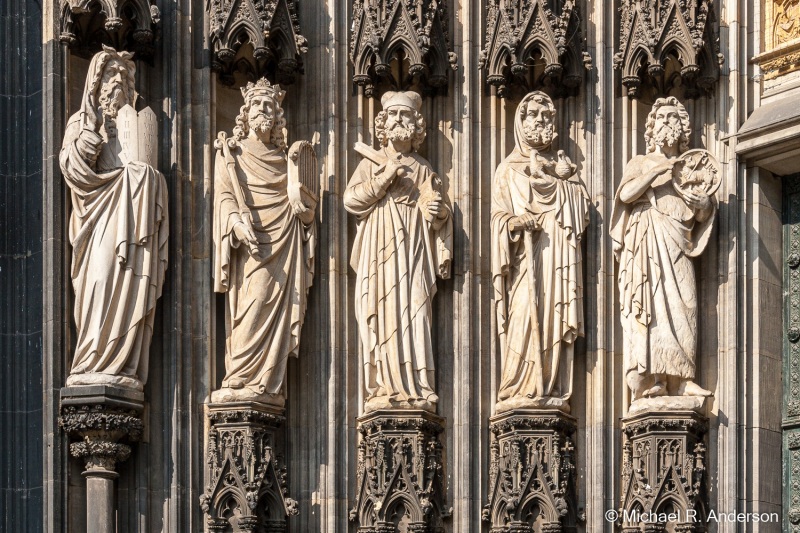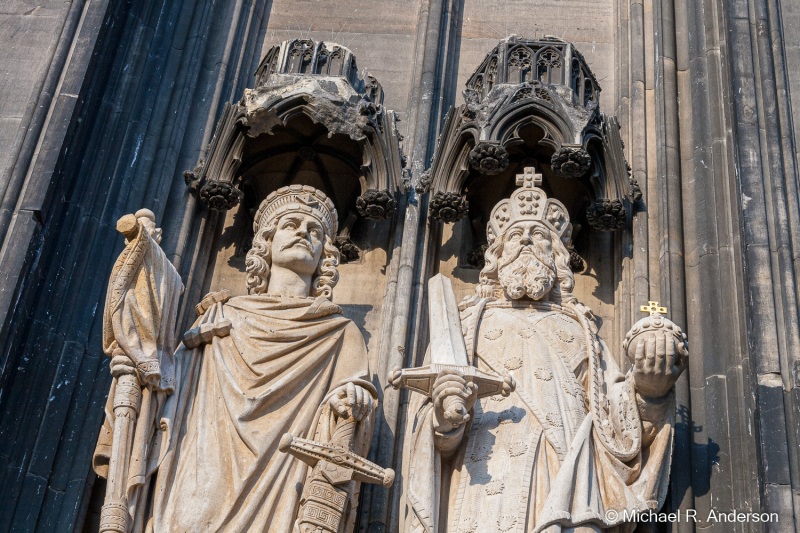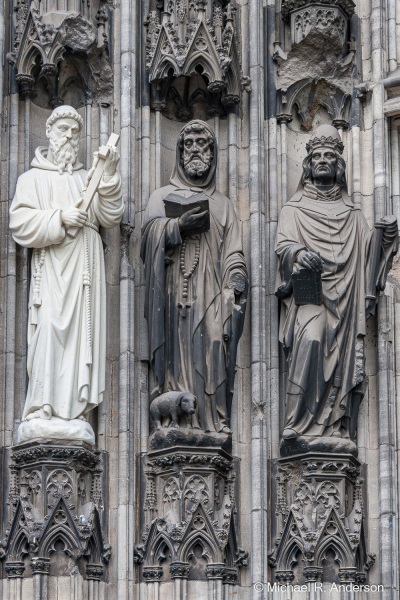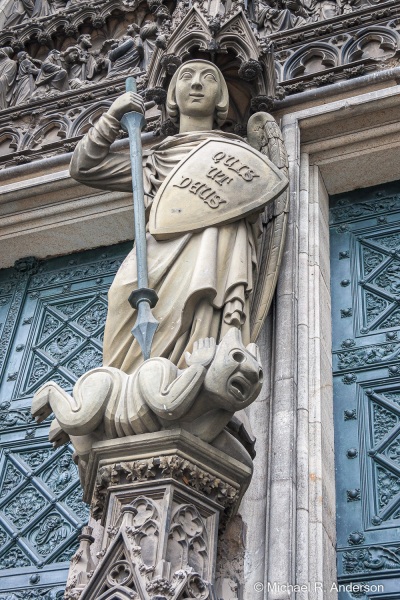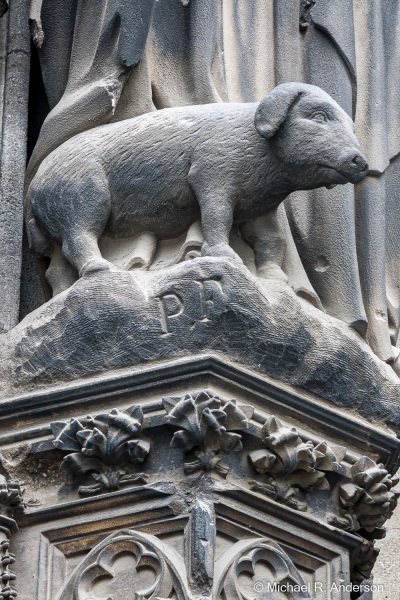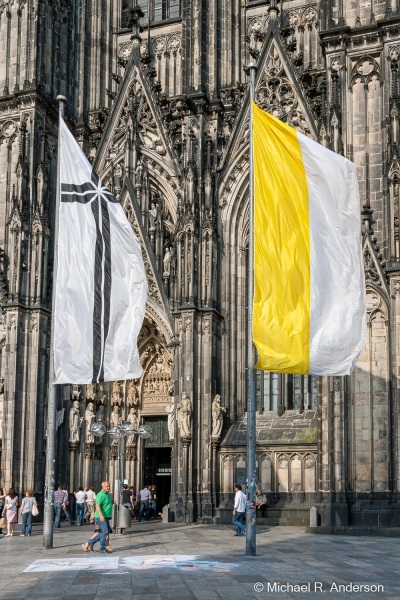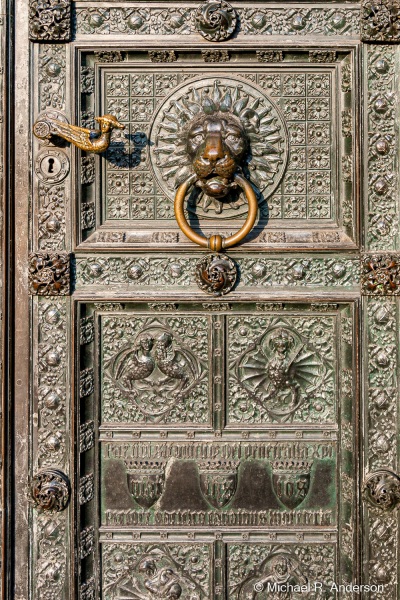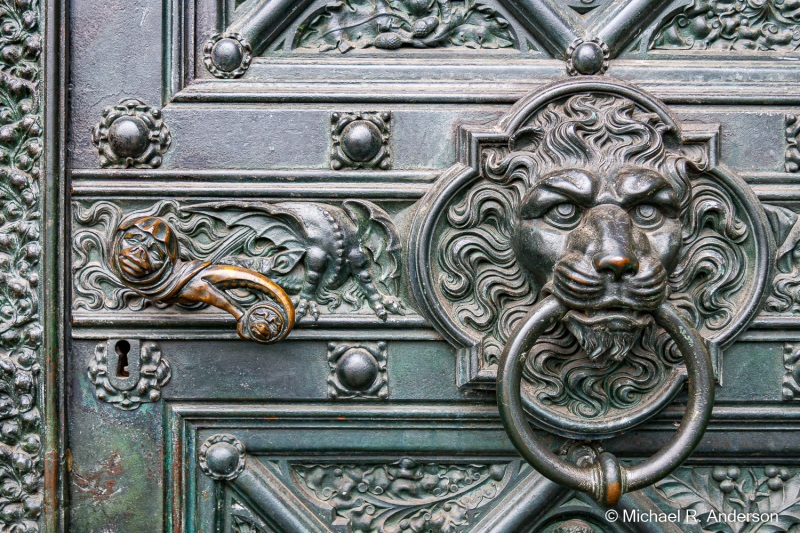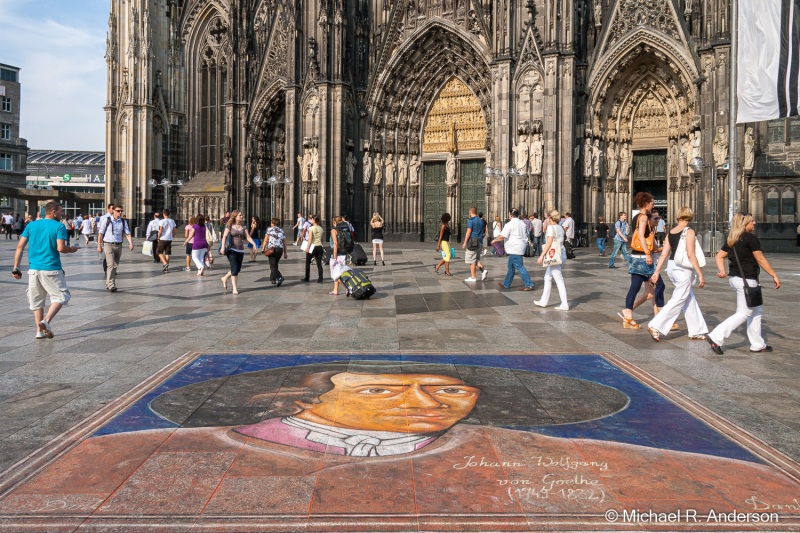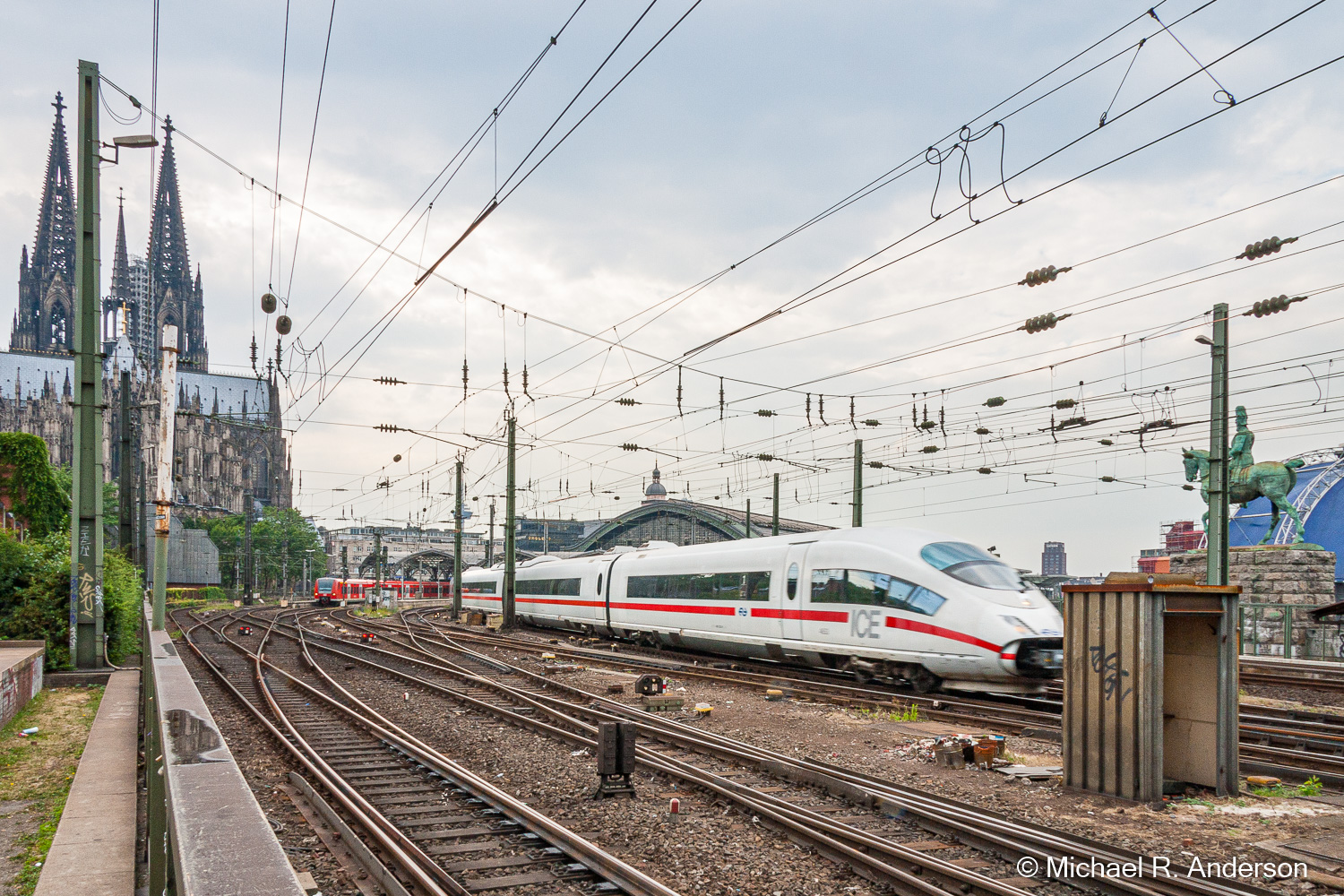
We packed our bags and took the tram to Amsterdam’s Centraal Station. (Note that “Centraal” is not a typo. The Dutch are blessed with an abundance of vowels and often put pairs of them in places were you’d expect to see only one.) Our first order of business was to activate our Eurail Pass. Then we went to catch the Amsterdam-Frankfurt ICE High Speed train. By the time we found the correct track, the train had already departed. However, since this was not the US, we didn’t have to wait a day until the next train, we caught the next one in 90 minutes.
The ride was fast, smooth and comfortable. After two hours and forty-five minutes, the train pulled into the station at our destination, Cologne. Cologne is the fourth largest city in Germany and the largest on the Rhine River. A city of its size can offer many attractions for tourists, but our reason for stopping there was to visit der Kölner Dom — the Cologne Cathedral. As we emerged from the station, the cathedral, only about a hundred yards away, dominated the skyline.
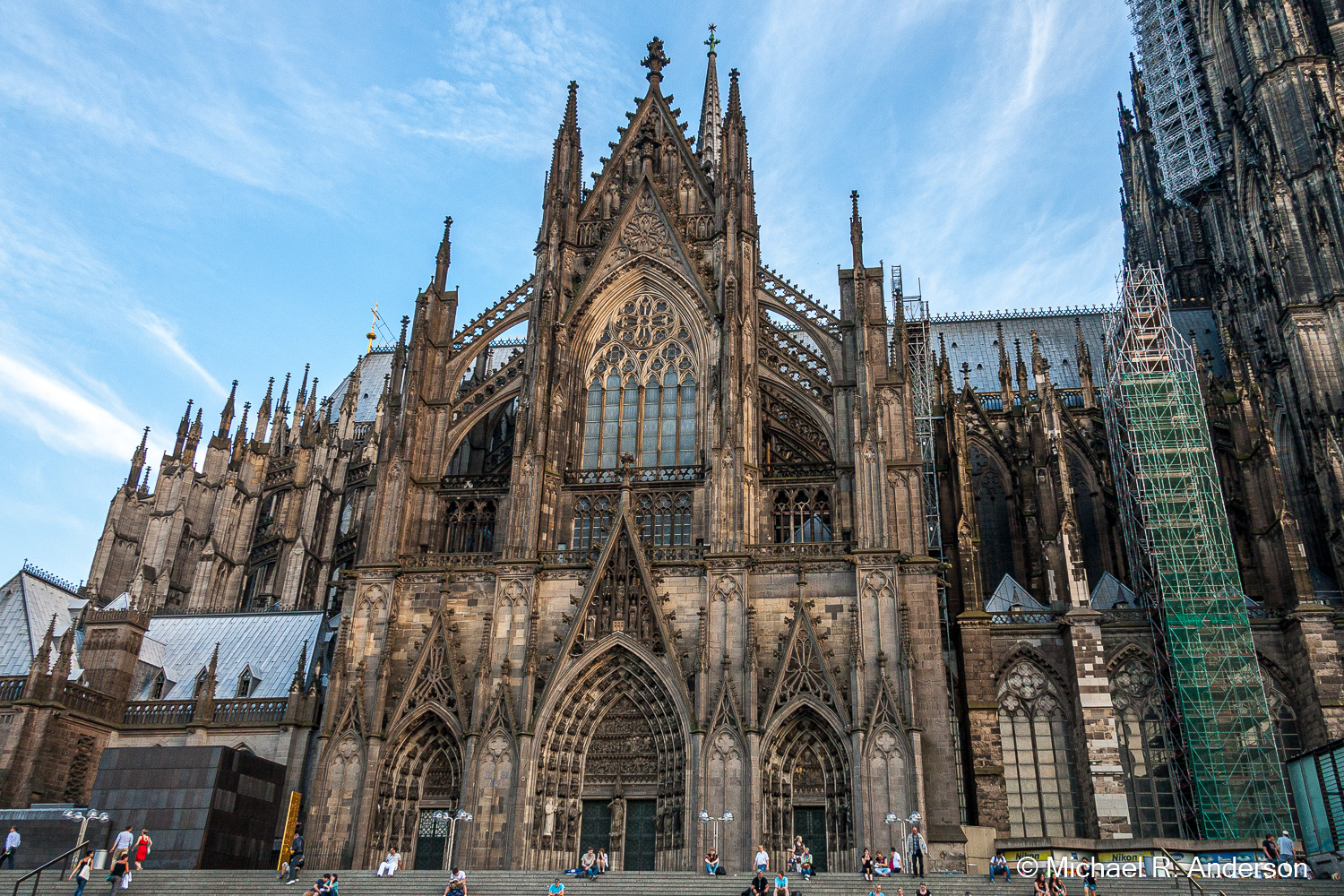
Kathy commented on the beauty and size of the cathedral. I told her she’s seeing it from the side; wait until she sees it from the front!
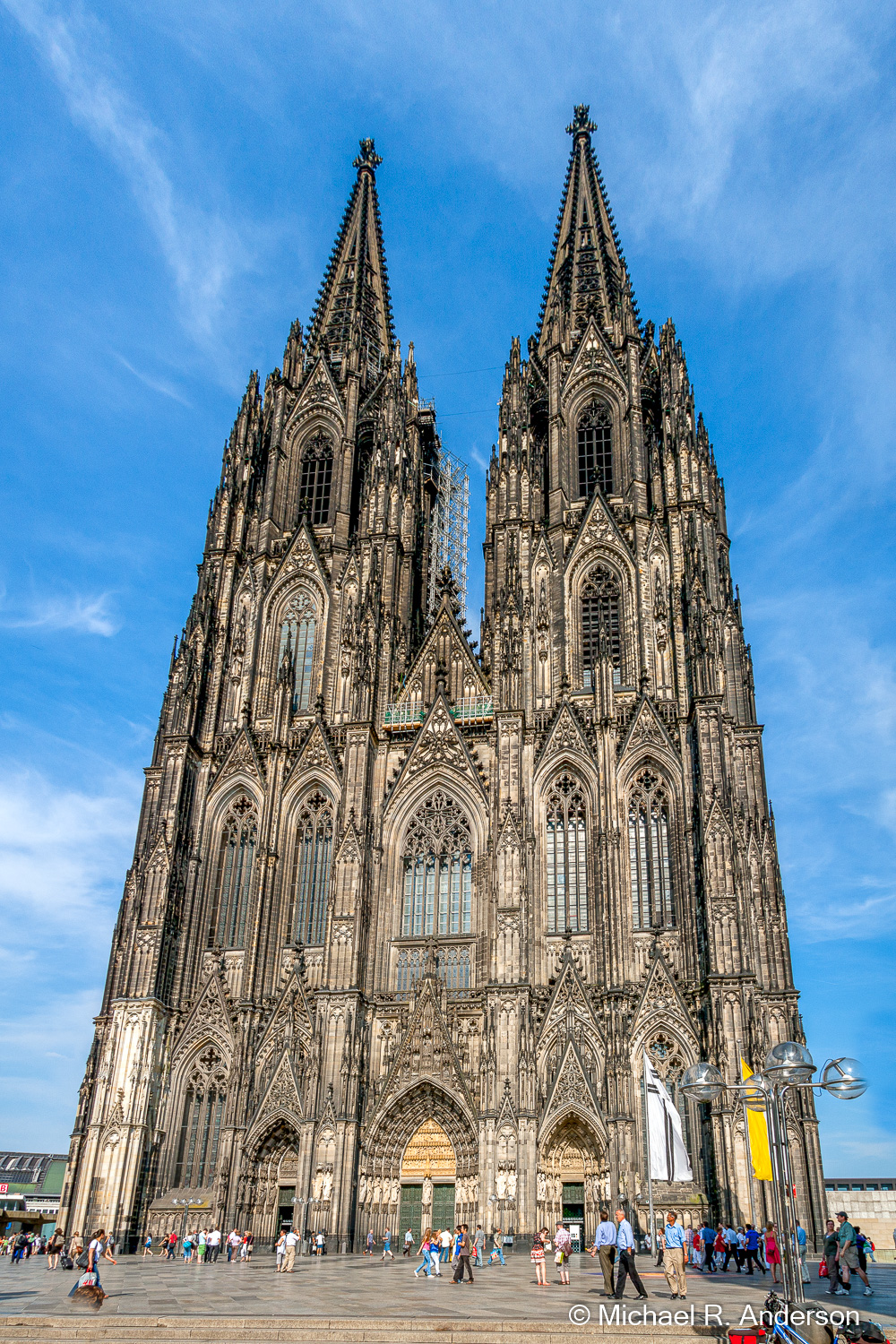
The broad sweep of European history always amazes me. The site of the Cologne Cathedral has been occupied by Christian churches since about the 4th century. An older cathedral was destroyed by fire in 1248, and work on the present cathedral began in the same year. After a delay from about 1560 – 1840, construction resumed and was finally finished in 1880. The Cologne Cathedral, designed in the Gothic style, is the tallest twin-spired church in the world (515 ft.). Although the spires are not the same height, you’d have to look very closely to see that the northern tower is about 2.5 inches taller than the southern tower. The cathedral is a World Heritage Site and attracts approximately 20,000 visitors a day.
After getting over the initial awe, we headed for the main entrance to look inside. It’s difficult to describe the enormity of the space. Including people in my photos “for scale” couldn’t really capture it. While walking around inside you feel the need to move quietly and speak only in hushed tones. Works of art graced the walls and, overhead, light streamed through towering stained-glass windows adding a feeling of peace and warmth.
There were also some fascinating views outside of the cathedral, such as carvings of obvious things like saints, less obvious things like a guy with a spear in the back of a funny-looking creature, and even unexpected things like a pig. Colorful flags welcomed visitors, ornate door knobs and hardware lined the doors, and artists chalked the pavement with their creations.
A bell in the cathedral began to ring slowly. As the speed of the ringing started to increase, more and more bells were added to the mix and the volume rose dramatically. (It made me think of Edgar Allen Poe’s poem The Bells, in which he used that great word “tintinnabulation.”) The ringing then began to soften and slow down until the last bell finally stopped. The entire process took about twenty minutes.
At the end of the day we decided to take a walk along the Rhine River and out onto the Hohenzollern Bridge, which caters to trains, bikes and pedestrians. We saw many boats tied up along the western shore; river taxis, shuttles and tour boats ply their trade here.
We were surprised to see thousands of padlocks attached to the chain-link fencing along the pedestrian and bicycle lane. They came in different sizes and colors and were engraved with initials or names and dates. These “love locks” are considered one of Cologne’s charming traditions. Here, couples can prove their everlasting love by fixing padlocks to the bridge and throwing the key into the river below. I sure hope that Erika & Erich, 29.04.2010 make it.
Although I’m a hopeless romantic, I did wonder how much money a diver could make by finding keys and selling them back to uncoupled couples.
Please pardon me while I ponder the past for a bit.
I’ve only been to Europe three times. I’m not old enough to remember World War II, but I’ve read many histories of that time. When I walk around cities there, I cannot imagine what the destruction from that war must have been like. Between May 1940 and March 1945, the city of Cologne was bombed in 262 separate air raids by the Allies, primarily the RAF. The Cathedral was hit by 14 bombs during the war, but the building didn’t fall. It’s believed that the Cathedral was not completely destroyed by bombs because it served as an easily recognizable landmark for pilots.

The consequences of wars continue long after they’re over. As recently at January 21, 2020, AP News posted a story that said, in part:
Explosives experts on Tuesday successfully defused an unexploded American bomb from World War II in the western German city of Cologne, authorities said.
The 500-kilogram (1,100-pound) bomb was found Monday evening during construction near the Rhine River in the center of the city. A TV station and the opera house had to be evacuated during the defusing operation. Shipping on the river and air traffic overhead were also interrupted before the defusing operation got underway.
World War II ended 75 years ago and bombs like this are still being found. Sadly, unexploded bombs and land mines remain in war zones all around the world, posing threats long after the hostilities have ended.
